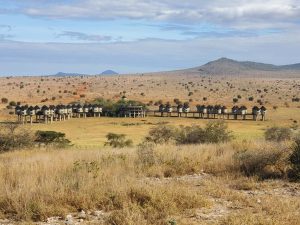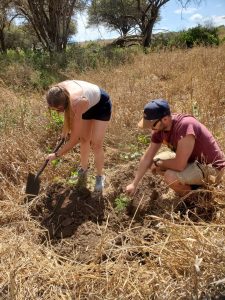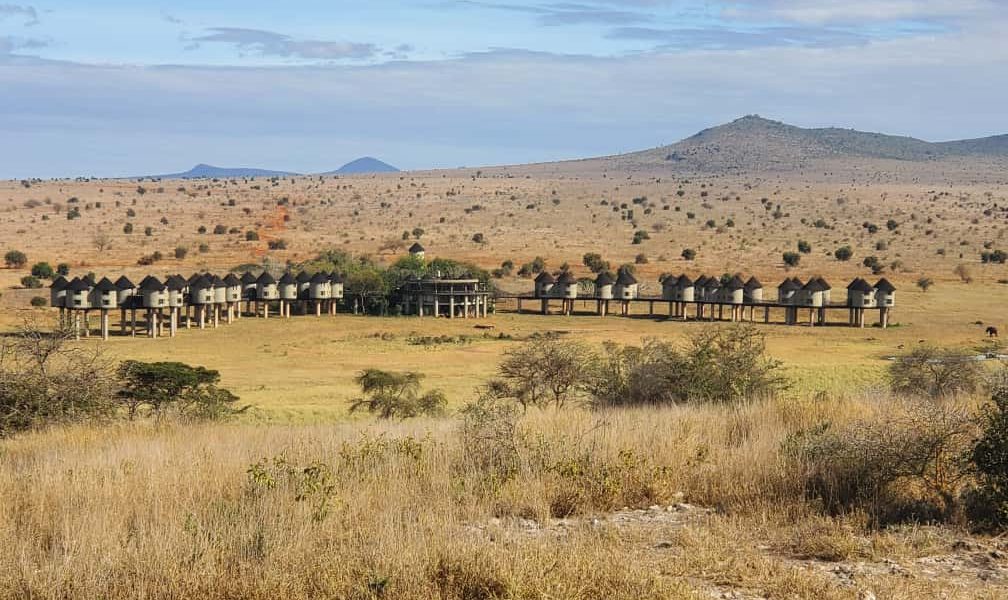Taita Hills Wildlife Sanctuary
Located in the Taita Hills of southern Kenya, the Taita Hills Wildlife Sanctuary is a hidden gem that showcases the region’s rich biodiversity and stunning landscapes. Spanning approximately 28,000 acres, this sanctuary is a vital conservation area. This article will introduce you to the sanctuary’s distinctive ecosystems, its diverse wildlife, conservation initiatives, and the significance of ecotourism in preserving this natural wonder.

Geographic and Ecological Overview
The Taita Hills are part of the Eastern Arc Mountains, a biodiversity hotspot recognized by conservationists worldwide. The sanctuary’s altitude ranges from 1,200 to 2,000 meters above sea level, creating diverse microclimates and habitats. This range contributes to a variety of ecosystems, including montane forests, grasslands, and wetlands. More so, the sanctuary is characterized by lush vegetation, with endemic species of trees and plants. The rich flora supports a diverse array of wildlife, including several species endemic to the region. The unique climatic conditions foster a vibrant ecosystem, making the Taita Hills Wildlife Sanctuary a critical area for conservation.
What to see in Taita Hills Wildlife Sanctuary
Flora (plants)
The sanctuary is home to over 1,500 plant species, many of which are endemic to the Eastern Arc Mountains. The montane forests are dominated by trees such as the Podocarpus and Juniperus. These provide essential habitat for numerous species. The undergrowth is rich with ferns, orchids, and medicinal plants, some of which are utilised by local communities for traditional medicine.
Fauna (animals)
The Taita Hills Wildlife Sanctuary boasts an impressive array of wildlife, including over 300 bird species, 40 mammal species, and numerous reptiles and amphibians. Notable mammals include:
- African Elephants: These gentle giants roam the sanctuary, playing a crucial role in maintaining the health of the ecosystem through seed dispersal and habitat modification.
- Buffaloes: The African buffalo, known for its unpredictable nature, is another iconic species found in the sanctuary.
- Colobus Monkeys: The Taita Hills are home to the endemic Taita Colobus monkey, which is critically endangered due to habitat loss and poaching.
- Bushbucks and Duikers: These smaller antelope species thrive in the dense undergrowth, providing a food source for larger predators.
Birdwatchers will be delighted by the variety of avian species, including the Taita Apalis, Taita Thrush, ostriches, and numerous raptors. The sanctuary’s diverse habitats make it a prime spot for birdwatching enthusiasts, especially during migration seasons.
Activities done in Taita Hills Wildlife Sanctuary
Visitors to the sanctuary can engage in a variety of activities, including:
Guided Nature Walks: Explore the diverse ecosystems with knowledgeable guides who share insights about flora and fauna.
Birdwatching: With its rich avian population, the sanctuary is a paradise for birdwatchers and photographers.
Game Drives: Experience the thrill of spotting wildlife in their natural habitat while enjoying the stunning landscapes.
Taita Hills Sanctuary’s successful conservation efforts
The Taita Hills Wildlife Sanctuary faces numerous threats, including habitat destruction, poaching, and human-wildlife conflict. To combat these challenges, various conservation initiatives have been implemented:
Community Involvement
Local communities play a crucial role in conservation efforts. The sanctuary collaborates closely with residents to promote sustainable land use and engage them in wildlife conservation efforts. Community-based programs have been established to enhance livelihoods while conserving the environment. For instance, eco-friendly farming practices and alternative income-generating activities, such as beekeeping and handicrafts, are encouraged.
Anti-Poaching Initiatives
To combat poaching, the sanctuary has instituted anti-poaching patrols and surveillance systems. Collaborations with local law enforcement and conservation organizations have improved the enforcement of wildlife protection laws. Educational programs are also conducted to raise awareness about the importance of wildlife conservation and the legal implications of poaching.

Habitat Restoration
Efforts are underway to restore degraded habitats within the sanctuary. Reforestation initiatives aim to reintroduce native plant species that provide food and shelter for wildlife. These projects not only enhance biodiversity but also improve the ecosystem’s resilience to climate change.
Ecotourism and Its Importance
Ecotourism plays a pivotal role in the sustainability of the Taita Hills Wildlife Sanctuary. By attracting visitors, the sanctuary generates revenue that is reinvested into conservation efforts and local communities. Ecotourism promotes awareness of the region’s biodiversity and the importance of conservation, fostering a culture of environmental stewardship.
What is the best time to visit Taita Hills Wildlife Sanctuary?
The best time to visit the Taita Hills Wildlife Sanctuary is during the dry seasons, which typically run from June to October and January to February. During these months, wildlife is easier to spot as animals congregate around water sources. The weather is generally pleasant, making outdoor activities more enjoyable. However, visiting during the rainy season (March to May) allows for lush landscapes and vibrant wildlife activity, although access may be more challenging due to muddy roads.
What to Pack as you visit Taita Hills Wildlife Sanctuary?
When visiting the sanctuary, it is essential to pack wisely. Here’s a checklist for your trip:
- Clothing: Lightweight, breathable clothing in neutral colors. Layering is recommended due to varying temperatures, especially in the early mornings and evenings.
- Footwear: Comfortable walking shoes or hiking boots for nature walks.
- Rain Gear: A waterproof jacket or poncho is especially recommended for visits during the rainy season.
- Sun Protection: Use sunscreen, wear sunglasses, and a wide-brimmed hat to protect yourself from the sun.
- Binoculars: Essential for birdwatching and spotting wildlife from a distance.
- Camera: To capture the breathtaking landscapes and wildlife.
- Insect Repellent: To ward off mosquitoes and other insects.
- Reusable Water Bottle: Staying hydrated is crucial, especially during outdoor activities.
Where to stay in Taita Hills Sanctuary
While visiting the Taita Hills Wildlife Sanctuary, several accommodation options cater to different preferences and budgets:
Salt Lick Safari Lodge: This luxurious lodge, situated near the sanctuary, offers stunning views of the surrounding landscape. The lodge’s unique design features elevated rooms that overlook watering holes, offering excellent wildlife viewing opportunities.
Taita Hills Safari Resort & Spa: Situated at the sanctuary’s gate, this lodge provides comfortable accommodations with an emphasis on eco-friendliness. Guests can enjoy guided walks and game drives, immersing themselves in the natural beauty of the area.
Voi Wildlife Lodge: A budget-friendly option located a short drive from the sanctuary. The lodge offers basic amenities and serves as an excellent base for exploring both the sanctuary and Tsavo East National Park.
Community Homestays: For a more immersive experience, consider staying with local families in nearby communities. This option supports local livelihoods and allows guests to engage with the culture and daily life of the residents.
Challenges facing the sanctuary
Despite its beauty and the success of conservation efforts, the Taita Hills Wildlife Sanctuary faces numerous challenges. Climate change poses a significant threat, impacting rainfall patterns and habitat conditions. Additionally, population growth in surrounding areas increases pressure on land and natural resources, leading to habitat encroachment.
To ensure the long-term survival of the sanctuary’s unique biodiversity, continued investment in conservation, community engagement, and sustainable practices is essential. Collaboration among government agencies, non-governmental organizations, and local communities will be crucial in addressing these challenges.
Why not visit Taita Hills now and contribute to its conservation?
The Taita Hills Wildlife Sanctuary stands as a testament to the beauty and richness of Kenya’s natural heritage. Its diverse ecosystems and unique wildlife make it an invaluable resource for conservation, research, and ecotourism. By fostering a culture of conservation and sustainable practices, the sanctuary can thrive for generations to come. Through community involvement and ongoing conservation efforts, the Taita Hills Wildlife Sanctuary not only preserves its rich biodiversity but also serves as a beacon of hope for wildlife conservation in Kenya and beyond.















